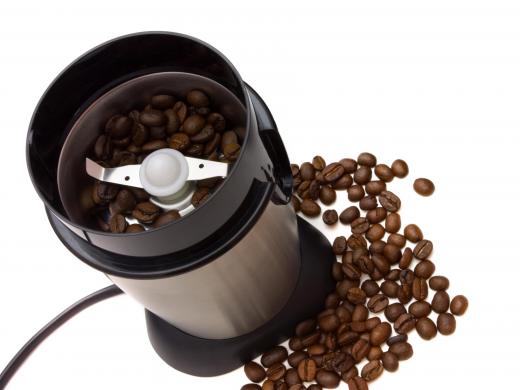A blade grinder is a type of cutting tool that uses a series of rotating blades to cut or grind materials. These devices are often referred to as propeller grinders because of the way the cutting blades resemble an airplane or boat propeller. The cutting blades on a blade grinder rotate very quickly to repeatedly cut an object from multiple angles and sides. Kitchen blenders represent one of the most common examples of a blade grinder, with propeller-like blades at the base to chop, grind, or blend food products.
In addition to blenders, blade grinders are found in a variety of other kitchen applications. Many food processors and coffee grinders rely on a blade grinder mechanism to puree food or grind coffee beans. Standard garbage disposals also use a similar mechanism, as do most lawn mowers.

The blades on a blade grinder can take one of two forms to meet the needs of various cutting applications. Some take a standard cross shape, with two intersecting blades. Others feature a single large blade in an S-shape. The blade design helps determine exactly how the materials can be cut and what textures can be achieved.
A number of other factors can also influence the way a blade grinder cuts different materials. The size of the blades, as well as the material they are made from determines how quickly and effectively they cut. The size of the motor used to operate the blades also has an effect. In many cases, users can simply run the blade grinder for an extended period to further cut or grind materials.

One primary disadvantage to blade grinders is the risk of injury when using these machines. Unlike some other cutting devices, the blades on this machine are left exposed at all times. This could result in accidental cuts to hands or fingers during use. It also makes the grinder more difficult to clean, both due to injury risk and poor access to the base of the blades.

Blade grinders must be properly cared for to maximize performance over time. The blades and surrounding area should be cleaned and dried after each use. Users should avoid caustic materials, which could lead to rust or corrosion. Extremely hard objects may damage the blades or the motor on these machines. Regular sharpening can keep blades sharp and ensure effective cutting, but care should be taken to maintain the blade shape and bevel during sharpening.
